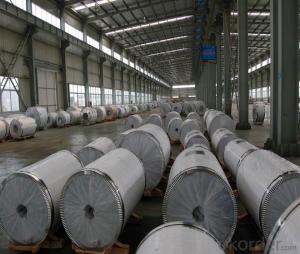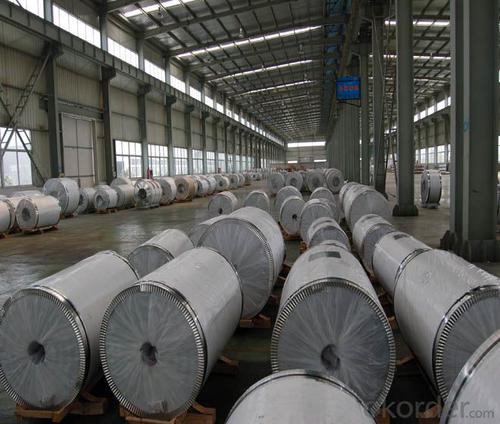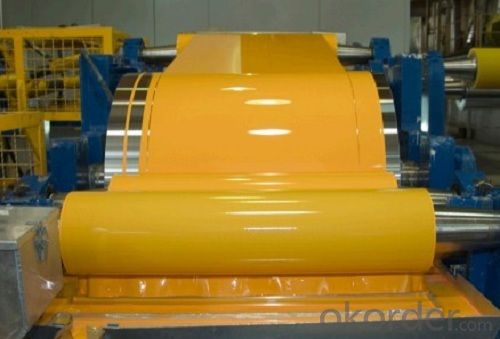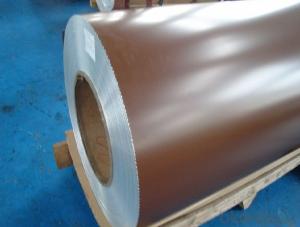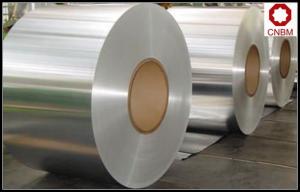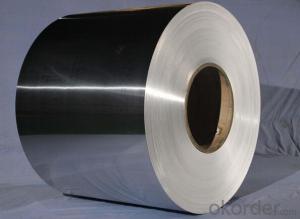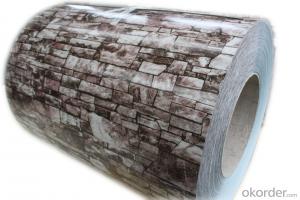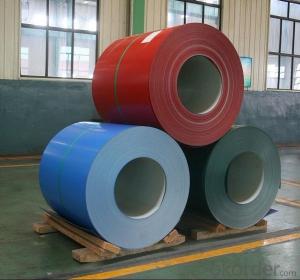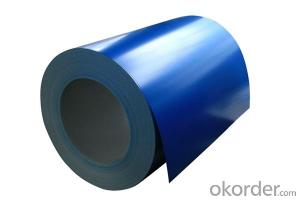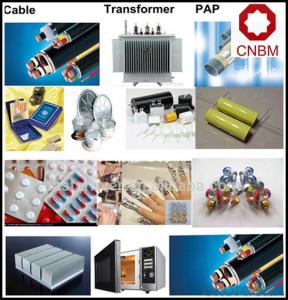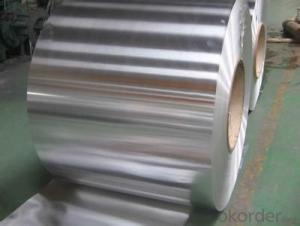Customized Color Coated Aluminum Coil for Roofing - Processing Aluminum Coil
- Loading Port:
- Shanghai
- Payment Terms:
- TT or LC
- Min Order Qty:
- 5 m.t.
- Supply Capability:
- 5000 m.t./month
OKorder Service Pledge
OKorder Financial Service
You Might Also Like
l Specifications of PVDF color coated aluminum coil used outdoors
Name | Customized Processing Color Aluminum Coil Aluminum Roofing Coil Coated Aluminum Coil |
Standard | GB/T3190-2008, GB/T3880-2006, ASTM B209, JIS H4000-2006,etc |
Material | 1060, 1200, 1070, 1080, 1100, a1100P, 3003, 3004, 5052, 5652, 5154, 5254, 5454, 5083, 5754, 5086, 5056, 5456, 2A12, 2024, 2014, 6061, 6062, 6063, 6082, 7003, 7004, 7075, 8010, 8020, etc |
Thickness | 0.1-200mm |
Width | 2-2200mm |
Length | 1-12m,or as required |
Temper | 0-H112, T3-T8, T351-T851 |
Surface | mill, bright, polished, hair line, brush, sand blast, checkered, embossed, etching, etc |
Payment Term | TT, L/C |
Export to | Ireland, Singapore, Indonesia, Ukraine, SaudiArabia, Spain, Canada, USA, Brazil, Thailand, Korea, Iran, India, Egypt, Kuwait, Oman,Viet Nam, South Africa, Dubai, England, Holland, Russia, etc |
Package | Standard export package, by wooden box or as required. |
Application | 1) Further making utensil. 2) Solar reflective film 3) The appearance of the building 4) Interior decorating: ceilings, walls, etc. 5) Furniture cabinets 6) Elevator decoraction 7) Signs, nameplate, bags making. 8) Decorated inside and outside the car |
l Packaging & Delivery
Packaging detail: Standard seaworthy exporting carton, Wooden pallets, waterproof paper and plastic coverage or as customer's requirements
Delivery detail: about 25 days from received oiginal L/C or advanc payment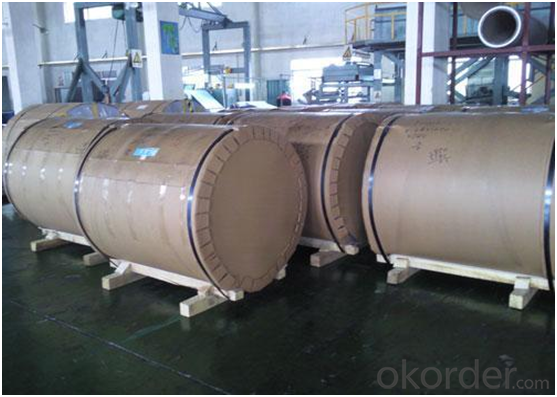
l Company Profile
CNBM International Corporation, China National Building Materials (Group) Corporation, is one of the largest companies in China building material & equipment industry, with 42,800 employees and sales in 2005 of US Dollar 4.395 billion. In 2006, China National Building Material Company Limited was listed on Hong Kong Stock Market with the stock code as 3323.
Color Coated Aluminum Coil is a popular product supplied by CNBM. And we are ready to meet any of your requirements.
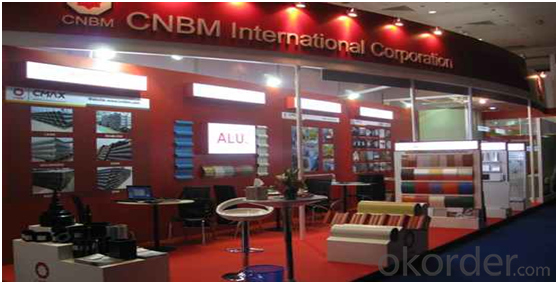
l Product Images
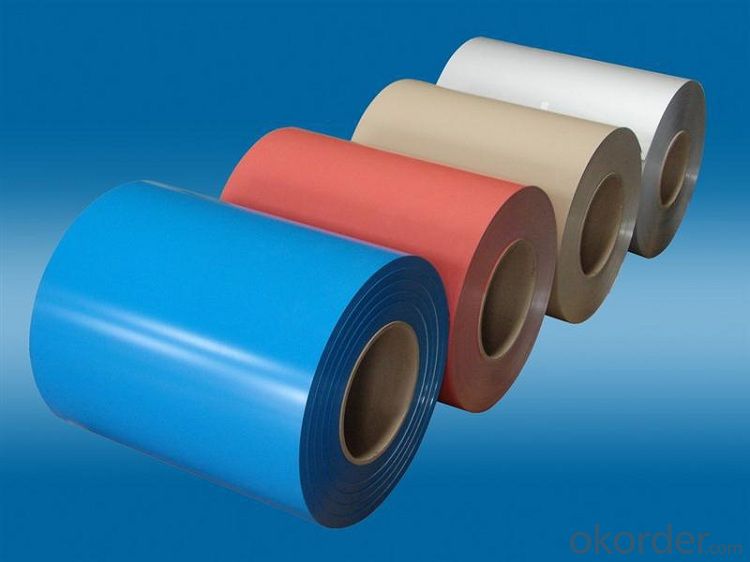
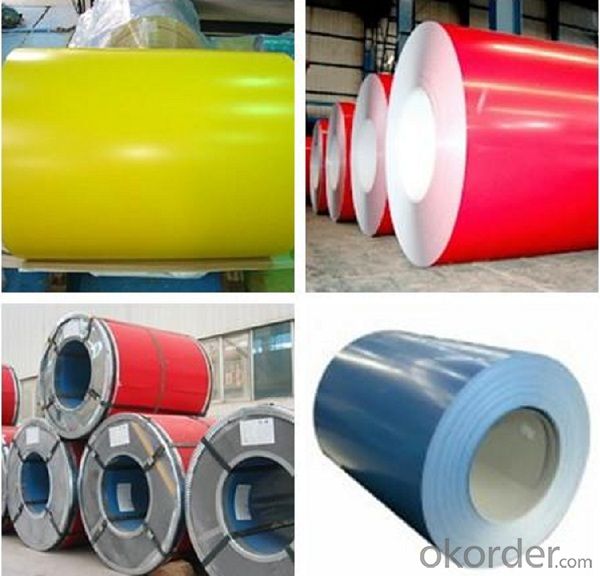
l FAQ
Q: Do you provide free samples?
A: Yes, free samples will be sent to you on freight at destination.
Q: Can I get your latest products catalogue?
A: Yes, it will be sent to you in no time.
Q: What is the MOQ?
A: 5 tons
Q: What are your payment terms?
A: We accept L/C, T/T.
l Contact us
Email:service@okorder.com
Color coated aluminum coil is refers to the aluminum alloy surface coloring treatment, due to the properties of aluminum alloy is very stable, not easy to be corroded, the surface after special treatment can guarantee at least 30 years do not fade, more because of its low density, high hardness, the unit volume weight is the lightest metal materials, color aluminum is the recent rise in the field of doors and windows is a kind of new material, compared with the steel, the biggest advantage is strong degree unparalleled, and color changing and always will not face plastic has always been questioned the ""toxic"" 2 words. So in the high-grade development of the doors and windows, sun room, balcony packaging and other fields are widely used. Now, color coated aluminum has become one of the most popular top decoration materials. It is a kind of environmental protection, durable and beautiful characteristics of the green. As decoration materials with other products can not be compared with the advantages: uniform color, bright and clean, strong adhesion, strong and durable, acid and alkali corrosion resistance, weathering resistance, decay resistance, friction resistance, resistance to ultraviolet radiation, strong weatherability.
Polyester coating aluminum coil
Is an anti UV UV coating, polyester resin is the backbone of the polymer containing ester bonds in the polymer as a monomer, add alkyd resin, UV absorber according to the gloss and can be divided into sub light and high light series. Especially suitable for interior decoration and advertisement board.
Carbon coated aluminum coil is suitable for indoor, outdoor decoration, commercial chain, exhibition, advertising, decoration and display in public places.
- Q: Just want to know for any boat builders out there. I have been told by my local paddling store that there are no aluminum kayaks. Why couldn't i build one? it cant be weight, I would build the frame from 1/2 inch square aluminum tubing and the body out of 1/32 high grade sheeting. So why does something like this not exist?
- This Site Might Help You. RE: Why couldn't an aluminum kayak work? Just want to know for any boat builders out there. I have been told by my local paddling store that there are no aluminum kayaks. Why couldn't i build one? it cant be weight, I would build the frame from 1/2 inch square aluminum tubing and the body out of 1/32 high grade sheeting. So why does...
- Q: What happened to the aluminum coil coming out of the annealing furnace?
- There is oil on the aluminum coil and the annealing time is too long.
- Q: How are aluminum coils protected against scratching and abrasion?
- Aluminum coils are protected against scratching and abrasion through various methods and coatings. One common method is the application of a protective film or coating on the surface of the coils. This film acts as a barrier, shielding the aluminum from external forces that could cause scratching or abrasion. Additionally, aluminum coils can undergo a process known as anodizing. Anodizing is an electrochemical method that creates a protective layer on the surface of the aluminum. This layer not only enhances the coil's resistance to scratching and abrasion but also provides it with increased durability and corrosion resistance. Another technique used to protect aluminum coils is the application of a protective lacquer or paint. This coating not only enhances the visual appearance of the coils but also acts as a barrier against potential scratches or abrasion. These protective coatings can be customized to meet specific requirements, such as UV resistance or chemical resistance. Furthermore, aluminum coils can be manufactured with a textured or patterned surface. This texturing creates a more robust surface that is less prone to scratching or abrasion. The texture helps distribute external forces more evenly, reducing the likelihood of damage. Overall, a combination of protective films, anodizing, protective coatings, and textured surfaces are employed to safeguard aluminum coils against scratching and abrasion, ensuring their longevity and performance in various applications.
- Q: Are aluminum coils suitable for outdoor signage?
- Yes, aluminum coils are suitable for outdoor signage. Aluminum is a durable and weather-resistant material that can withstand various outdoor elements, such as rain, sunlight, and temperature changes. It is also lightweight, which makes it easier to install and transport. Additionally, aluminum coils can be easily shaped and formed into different designs, allowing for versatile and eye-catching signage options.
- Q: The general roll also 5,6t appearance, specific to your own weigh, length, weight = / (width * thickness * density)
- The general roll also 5,6t appearance, specific to your own weigh, length, weight = / (width * thickness * density)
- Q: What are some common applications for aluminum coils?
- Some common applications for aluminum coils include manufacturing of roofing materials, HVAC systems, automotive parts, electrical wiring, packaging materials, and construction materials.
- Q: How are aluminum coils used in the production of heat sinks?
- Aluminum coils are used in the production of heat sinks by being shaped into fins, which are then attached to a base plate. This finned structure allows for increased surface area, facilitating better heat dissipation from the electronic components. The coils are typically formed through a process called extrusion, enabling them to efficiently transfer and dissipate heat, making them an essential component in heat sink manufacturing.
- Q: What are the different hardness levels of aluminum coils?
- Aluminum coils come in various hardness levels, which are determined by the alloy and tempering process used in their manufacturing. The most common hardness levels for aluminum coils are as follows: 1. Soft (O temper): This state represents the utmost malleability and ductility of aluminum coils. It allows for extensive shaping and bending, making it suitable for applications that require such flexibility. 2. Quarter Hard (H12 temper): In this hardness level, aluminum coils have undergone a slight cold-working process to enhance their strength and stiffness. Although they are less malleable than soft coils, they still possess good formability. 3. Half Hard (H14 temper): Coils in this hardness level have undergone a moderate cold-working process, resulting in increased strength and stiffness. They are less formable than quarter-hard coils but are well-suited for applications requiring higher strength. 4. Three Quarter Hard (H16 temper): Aluminum coils in this hardness level have undergone a more intensive cold-working process, making them even stronger and less formable than half-hard coils. They are appropriate for applications that demand high strength and minimal deformation. 5. Full Hard (H18 temper): Coils in this hardness level have undergone the most extensive cold-working process, resulting in maximum strength and minimal formability. They are commonly employed in applications that prioritize high structural integrity and resistance to deformation. It is important to acknowledge that the specific hardness levels available for aluminum coils may vary based on the alloy and manufacturer. Moreover, different industries and applications may have specific requirements for hardness levels, so it is crucial to select the appropriate hardness level based on the intended use of the aluminum coils.
- Q: Are aluminum coils suitable for thermal insulation?
- No, aluminum coils are not suitable for thermal insulation. Aluminum is a highly conductive material, meaning it readily transfers heat. This makes it ineffective in preventing heat transfer between different areas or maintaining a desired temperature within a space. For thermal insulation purposes, materials with low thermal conductivity, such as fiberglass, mineral wool, or foam insulation, are preferred as they minimize heat transfer and provide better insulation.
- Q: How are aluminum coils inspected for surface defects?
- To ensure the production of high-quality and defect-free aluminum coils, a variety of methods are employed to inspect for surface defects. Visual inspection is one commonly used technique, wherein trained inspectors carefully examine the entire surface of the coils for imperfections such as scratches, dents, or unevenness. This inspection takes place in optimal lighting conditions to ensure visibility and accuracy. In addition to visual inspection, more advanced techniques are utilized to detect subtle surface defects. An example of such a method is fluorescent penetrant inspection, where a fluorescent dye is applied to the coil surface. This dye seeps into any surface defects or cracks, and after a certain period of time, the excess dye is removed. The coil is then examined under ultraviolet light, which causes the dye to fluoresce, thereby making any defects easily visible. Another frequently used technique is eddy current testing, a non-destructive method that employs electromagnetic induction to identify defects like cracks or delaminations on the surface of aluminum coils. A probe is passed over the coil surface, and any variations in electrical conductivity caused by defects are detected and analyzed. Furthermore, automated systems equipped with high-resolution cameras and image-processing software can also be utilized for surface inspection. These systems capture detailed images of the coil surface, which are then analyzed by the software based on predefined criteria to identify any defects. This method ensures consistent and objective inspection results. Overall, thorough inspection procedures are implemented to detect and address any surface defects in aluminum coils before further processing or usage. These inspections are vital in maintaining product quality, adhering to industry standards, and ensuring customer satisfaction.
Send your message to us
Customized Color Coated Aluminum Coil for Roofing - Processing Aluminum Coil
- Loading Port:
- Shanghai
- Payment Terms:
- TT or LC
- Min Order Qty:
- 5 m.t.
- Supply Capability:
- 5000 m.t./month
OKorder Service Pledge
OKorder Financial Service
Similar products
Hot products
Hot Searches
Related keywords
